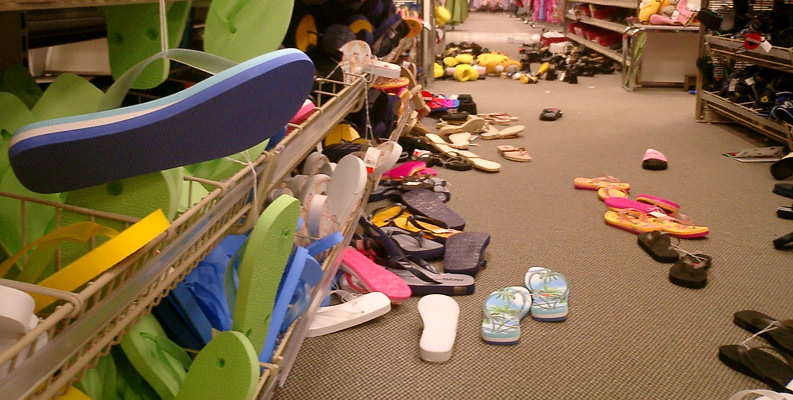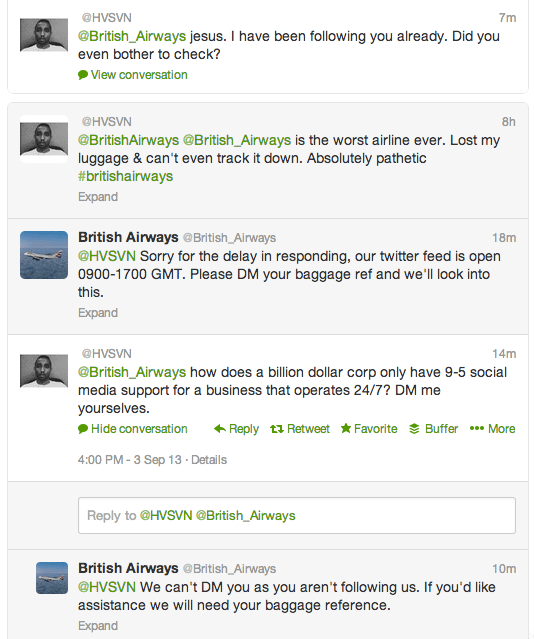-
Why Fire Bad Customers and How to Do it Right
Tue, 15 Sep 2015, in Customers
Enjoying this one? You might also like How to Write the Best Email: A Style Guide in Etiquette
 original photo credit Chris Walters
original photo credit Chris WaltersDon’t rock the boat, so the saying goes.
Funny enough, this advice only goes so far. But how do you know when to stop? It was something that Dr. Dan Ariely, a professor of behavioral economics at Massachusetts Institute of Technology wanted to get to the bottom of. His experiment explored how attached we are to unknown options and if we’re willing to let them vanish.
Students were asked to play a computer game that paid real cash once money was discovered behind closed doors. Once each player used up 100 allotted clicks, they could go to different rooms for higher payoffs, but it would cost them another click.
Read More: Where Do Human Emotions Fit in the Customer Experience?
As students progressed in the game, they were met with restrictions. If they stayed out of a room, its door would start shrinking and eventually disappear. Harsher penalties for entering new rooms appeared, such as losing their clicks or money.
Students should have ignored the disappearing doors but they didn’t. Many lost all their money trying to frantically enter the available rooms. Why did so many students do this?
Closing a door on an option is experienced as a loss, and people are willing to pay a price to avoid the emotion of loss. In the experiment, the price was easy to measure in lost cash. In life, the costs are less obvious – wasted time, missed opportunities. If you are afraid to drop any project at the office, you pay for it at home.Dealing with resource constraints is nothing new, so why don’t we treat customers the same way? Like the disappearing doors in the experiment, customers can chose to remove themselves at any time. By chasing after empty customers, you can lose more than your integrity as a business: you lose out on building relationships with customers that value and are happy to use your product.
Bad Customer vs. Unhappy Customer
The MIT experiment demonstrated that it’s not only painful to close down our options; it’s tempting to please everyone at the same time. As a result, it’s important to identify customers that are merely having trouble seeing the value in your product.
A customer that’s being difficult due to perceived difficulties in using your product is not necessarily a bad customer. When difficult customers are made happy, they provide remarkable ROI and turn into your most vocal brand advocates ready to see you succeed.
Customers who are having problems with your product will almost always contact you first – and if you fail to help them out, they may take their concerns to social media. If their concerns are well-founded then they will be supported by other users. In other words, the crowd becomes the judge, jury and executioner.
Here’s a situation many of us are familiar with: lost luggage after a flight. In this case the customer wanted to showcase his situation by paying for a promoted tweet. This had its desired effect: the story went viral with an overwhelming majority of readers siding with the user, not the airline.

The consensus in twittersphere? Bad airline, good customer.
Identify bad customers
Nobody wants to cut off the hand the feeds them. Besides, letting a customer go is an unpleasant experience for all parties involved. It doesn’t have to be that way, though! Consider that the majority of customers are either unsatisfied with an aspect of your business or may have trouble getting their point of view across. Here are three characteristics of bad customers:
- Bad customers are threatening. They make your staff feel uncomfortable and disrupt their efforts to help other customers.
- Bad customers are offensive. They may make personal remarks and suggestions that are aimed to draw a reaction or ire out of the support representative.
- Bad customers are unreasonable. This is the most common among the three and perhaps the most difficult to discern from a legitimately unsatisfied customer. This customer can contain the above two characteristics while demanding too much from you and your business.
Communicate your regret
Once you realize the relationship with your customer is beyond saving, you will need to craft an appropriate response to the customer. Your customer is likely feeling that it’s you who is wrong and unreasonable, so it’s important to apologize and communicate regret you couldn’t serve the customer’s needs better.
- Apologize to the customer for your inability to help them
- Try to recommend an alternative solution, such as your competitor (they will probably go there anyway)
- Don’t burn bridges. Terminating relationships on a good note leaves the door open for collaboration down the road and your company gets to keep its reputation for excellent customer service.
Perhaps Herbert Kelleher, American Southwest airlines CEO crafted the best reply (though a bit too direct) after a demanding and abusive customer escalated the situation through various ranks in the company:
We’re going to miss you. Love HerbThis message says a number of things. First, it shows the customer that the company has done everything in their power – right up to involving the CEO – to turn the situation around. It also shows a business that values its employees without asking them to exceed authority or bend over backwards for the customer.
Be prepared for the consequences
Will a “fired customer” complain to all their family or friends? Yes. Will they also gripes on social media? Probably. Will they go to your competitor and share their story? Maybe.
By going above and beyond during your farewell speech, you can leave the relationship on a good note and minimize the damage control if things don’t go the way you planned.
What do we make of it all?
We channel time and other resources into an unproductive area of our business. Time that could be better utilized in working with customers who appreciate you and show their appreciation with their actions (and wallets).
Keeping customers around after they’ve wreaked havoc on your business can have negative effects on your operations. Think of your employees that have to deal with an abusive and unrealistic customer. Never mind treating the next customer poorly – their whole day can turn sour.
And what do bad customers do to you, the business owner? If the customer has a new demand every time and wants to speak directly with you – it adds to your stress, disrupts your busy schedule and can even lead to burnout.
Before throw the baby out with the bathwater, however, think if it’s in any way possible to salvage the situation.
Read More: 5 Ways to Connect With Customers, Easily and Effectively
Tags: customers

